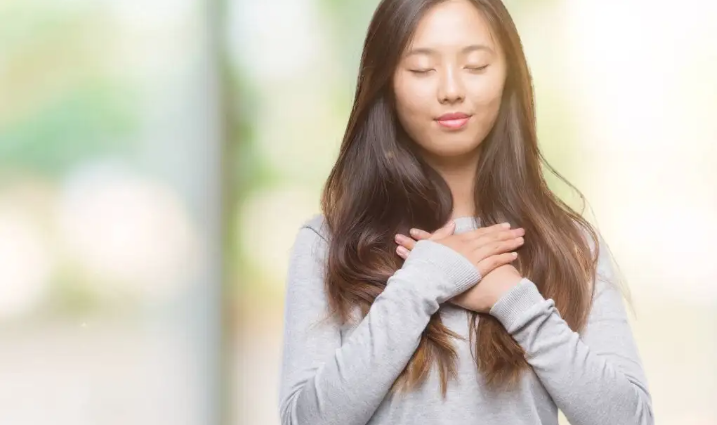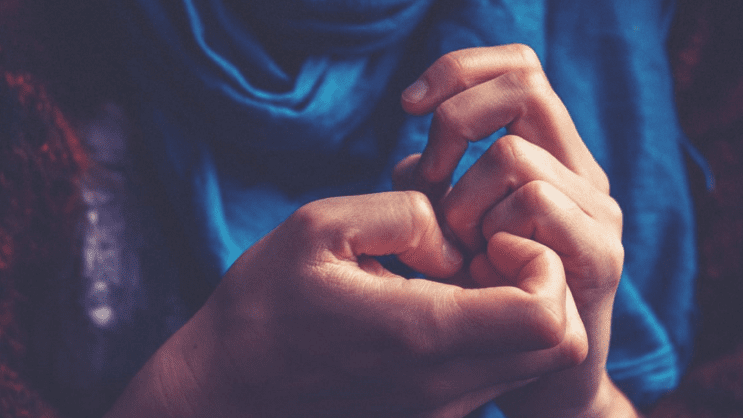There are days when everything feels overwhelming and anxiety forms a knot in your chest. If you have been feeling this way for a while, we suggest you try a simple technique that will reduce these physiological symptoms. The butterfly hug is a resource based on dual stimulation that offers almost immediate well-being.
This hug is based on the EMDR therapeutic model, which aims to treat post-traumatic stress or intense anxiety. If you accompany it with a positive visualization exercise, body tension is relieved more quickly and effectively.
The app was developed after Hurricane Paulina devastated southern Mexico in 1997. Thanks to this resource, many of the survivors handled this harsh emotional impact a little better. We will give you all the tips in the following article.
Butterfly Wrap Keys to improve your health
The butterfly hug tries to simulate the movements of this insect on your chest to stimulate two brain hemispheres. The aim is to create a state of neurological relaxation through a series of touches. Now, it is possible that this simple explanation may raise some doubts about its effectiveness. However, it is necessary to draw attention to one point.
read more:
Why is it that we fall asleep easily on the couch but find it hard to fall asleep in bed?
The technique is integrated into EMDR therapy, where bilateral stimulation is applied in one of its stages. Therefore, emotional depersonalization gradually occurs.
An article in Frontiers in Psychology highlights the usefulness of this approach in treating patients with post-traumatic stress. We encourage you to explore the topic in more depth below.
1. Who developed the technique?
The butterfly hug was developed by psychologists and EMDR therapists Lucina Artigas and Ignacio Jarero in 1997. They applied the method to survivors of Tropical Cyclone Paulina in southern Mexico and it was later published in the Journal of EMDR Practice and Research. This helping protocol was particularly effective with children.
From then on, the embrace became popular both inside and outside therapy settings.
2. How is this hug applied?
You will be interested to know that this tool is very simple to operate. It can be part of your first aid kit when you feel that pain is holding you back and your anxiety hardly allows you to breathe or think clearly. Take note of each step to perform it effectively:
- Sit in a quiet environment.
- You can perform this technique standing or sitting.
- Relax and keep your arms crossed over your chest.
- Your fingertips should be under your collarbone.
- Your hands and fingers should point towards your neck.
- Now interlock your thumbs together to form the body of the butterfly.
- The extension of your fingers will represent the wings of the butterfly.
- Tap your chest 5 times, alternating your right and left hands.
- Do this for about 30 seconds, rest a little and start again.
- Take a deep breath and allow the emotions to gradually harmonize.
- Accept the thoughts and feelings that arise without judgment. Allow them to pass.
You can do the butterfly hug exercise while visualizing something pleasant; the duration varies from 5 to 10 minutes.
3. Why is it an effective method?
The butterfly technique for reducing anxiety is based on “positive alternating bilateral stimulation”. As we mentioned, this is a typical strategy of EMDR therapy and science has been investigating its benefits for some time. Specifically, this type of stimulation provides a number of notable benefits, as described in an article in the journal PloS One. These include:
- Promotes emotional regulation.
- Bilateral stimulation evokes memories of pleasant events.
- Promotes relaxation; experiences a feeling of comfort and calmness.
4. Is it good for anything other than anxiety?
This technique has recently become popular thanks to social networks like TikTok. It is common to see many young people doing this hug on their chest, simulating the flapping of a butterfly’s wings. It is usually resorted to to regulate anxiety. But you will be interested to know that it has areas where it can be of benefit; these are:
Problems falling asleep: If you suffer from insomnia or your anxiety prevents you from getting a good rest, do this simple exercise.
Panic attacks: Practice this hug when you find it hard to breathe, when you feel unreal, when you have the feeling that something bad might happen to you.
Dealing with very stressful situations: Job interviews, a medical appointment, a public presentation, taking an exam… Life is full of complex situations and this resource is useful to better cope with them.
Emotional First Aid: Now that you know how to hug a butterfly, feel free to teach it to others who are going through a difficult time. Sometimes many people faint when they receive bad news or witness a traumatic event. Guide them through this process and you will see how they start to feel better.
The butterfly technique to relieve anxiety is mainly used in emergency and disaster situations. In this way, survivors experience more physiological calmness to process what has happened.
5. Allows you to process your emotions
The first thing you will experience when you practice this technique is a sense of self-protection and relaxation. Although such an exercise won’t solve the root of your problems, it’s a great start because you can start working on yourself now that physical and emotional calmness has been achieved.
Dialogues in Clinical Neuroscience shared an article stating that approximately 33.7% of the population is affected by an anxiety disorder in their lifetime. Having this technique on hand at all times acts as an emotional lifeline at any given moment so that the suffering is not excessively heightened. Therefore, you better regulate physiological overstimulation and better assimilate what is happening to you.
Hug yourself to relax
Life can be very chaotic, uncertain and even threatening. It is true that you never know what awaits you at any given time. But there is nothing better than having some simple psychological resources to face any challenge. Something as simple as simulating the movements of a butterfly by holding your hands over your chest is helpful.
These alternating strokes, first on one side and then on the other, are good for your brain; they also stimulate and relax it and create positive emotions. So don’t hesitate to use this technique when you need it. But remember that it is an auxiliary tool, not a substitute for therapy. If you have a problem that is difficult to solve, don’t hesitate to ask for professional help.
Valeria Sabater: holds a degree in Psychology from the University of Valencia (2004). She has extensive training and experience in areas such as psychological well-being, emotional disorders, emotional intelligence and social psychology. She combines her work as a psychologist with writing, a field in which she has received several awards.


